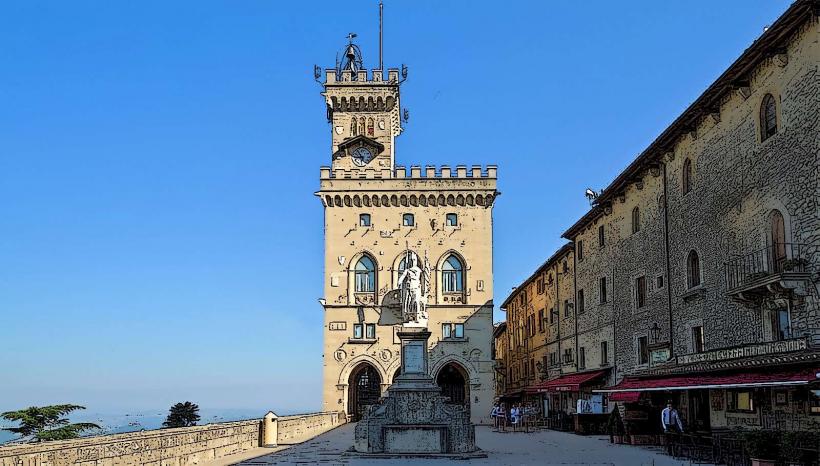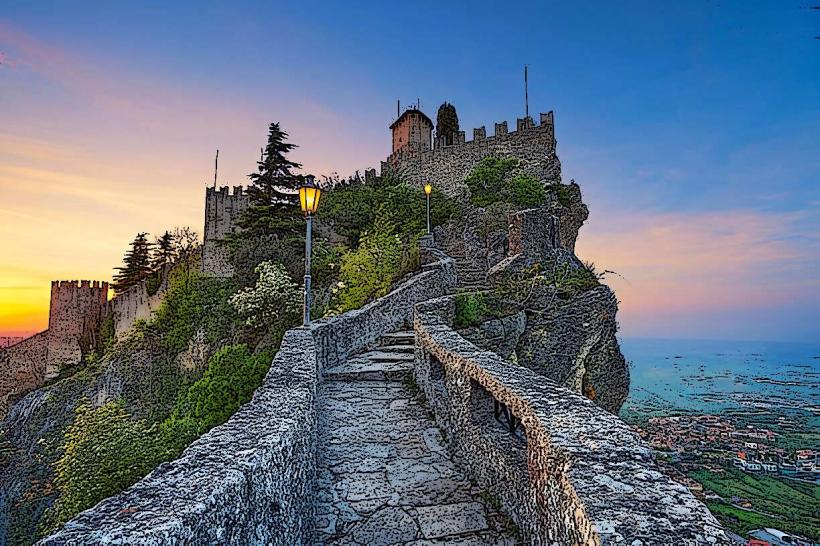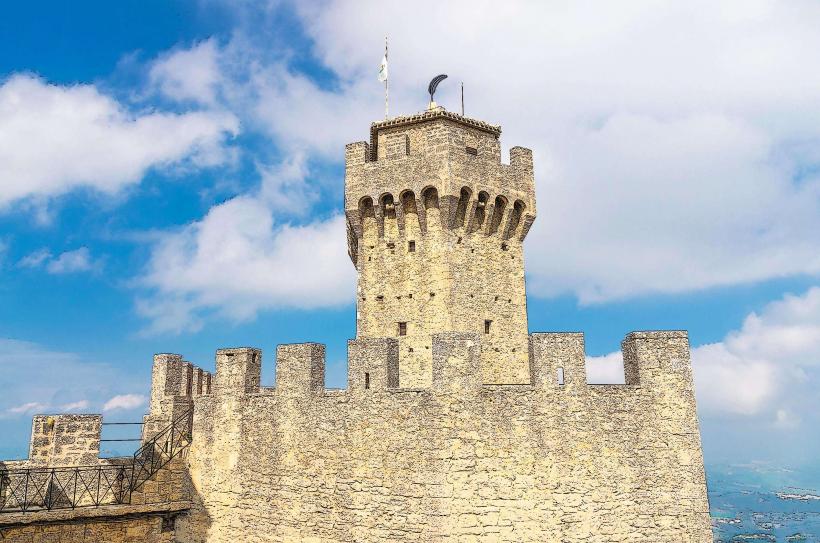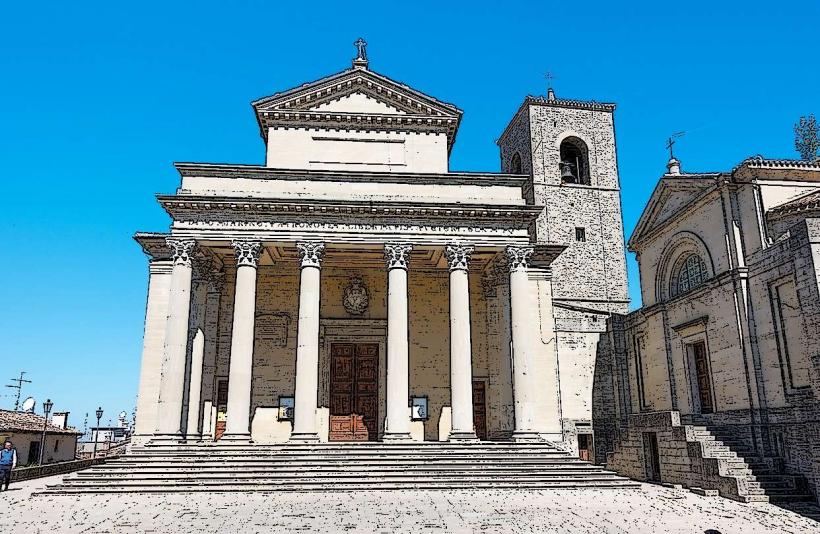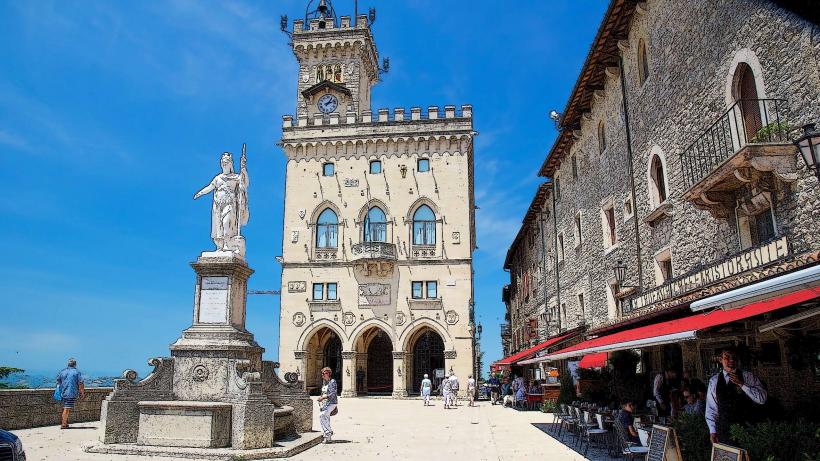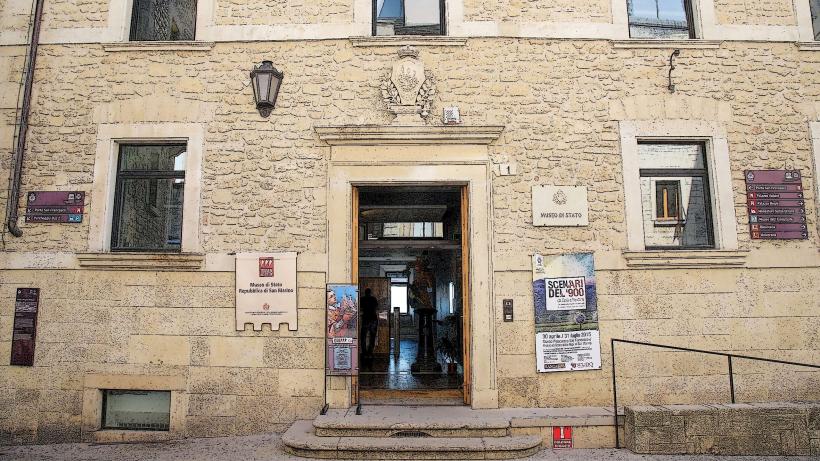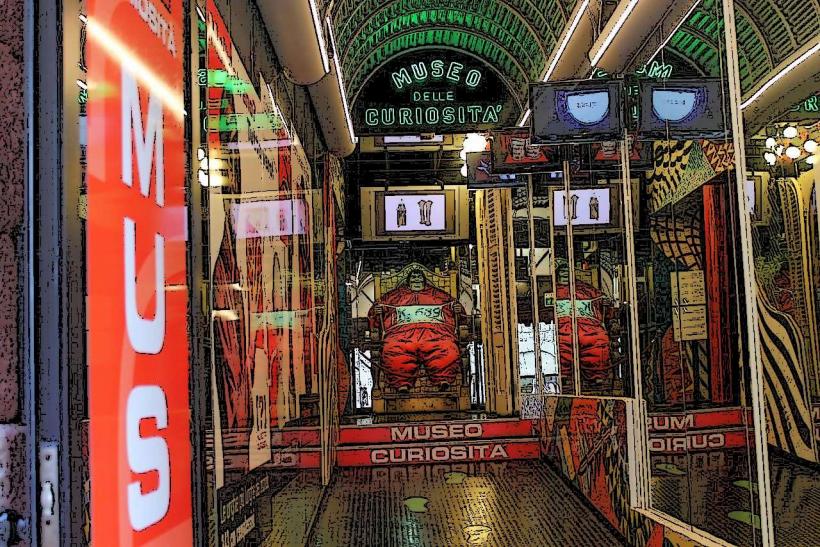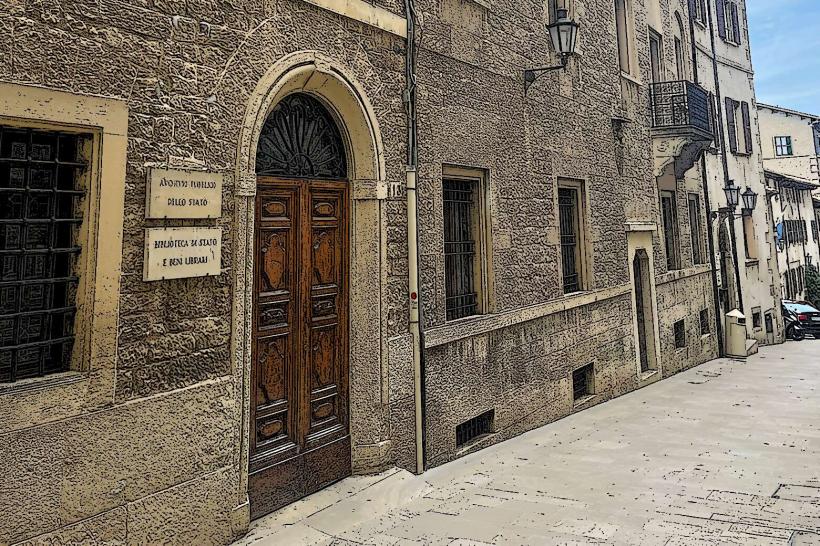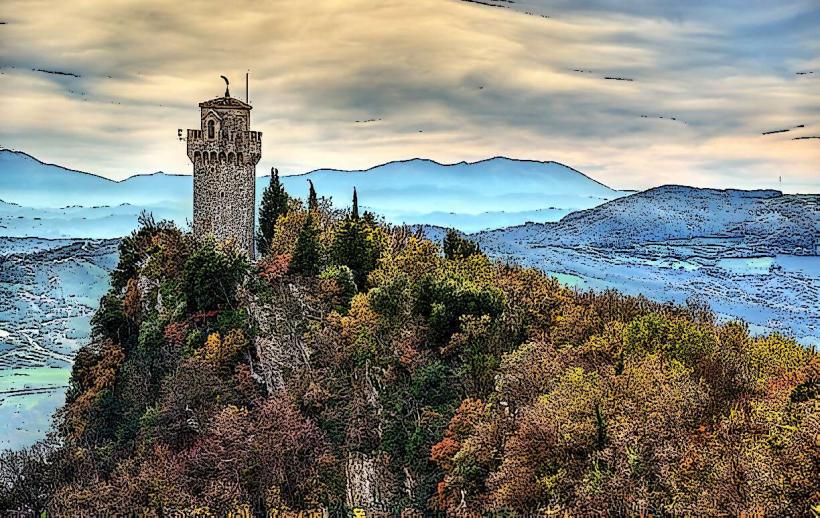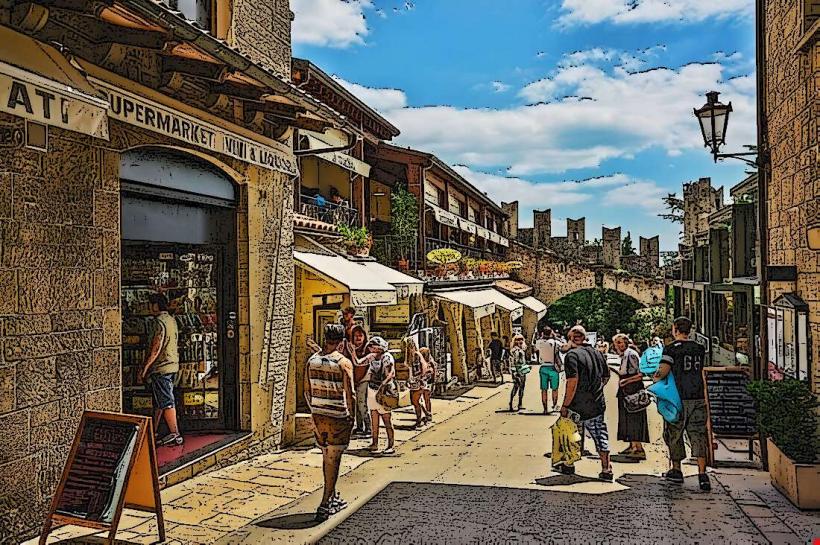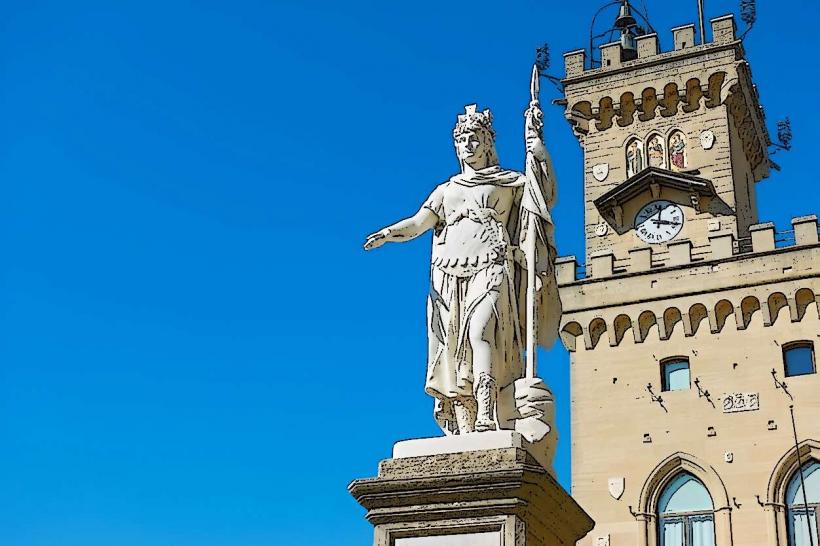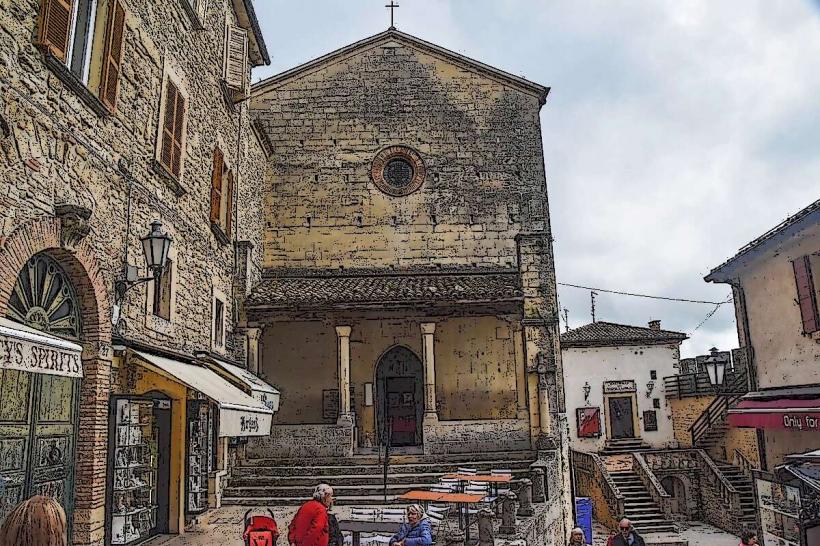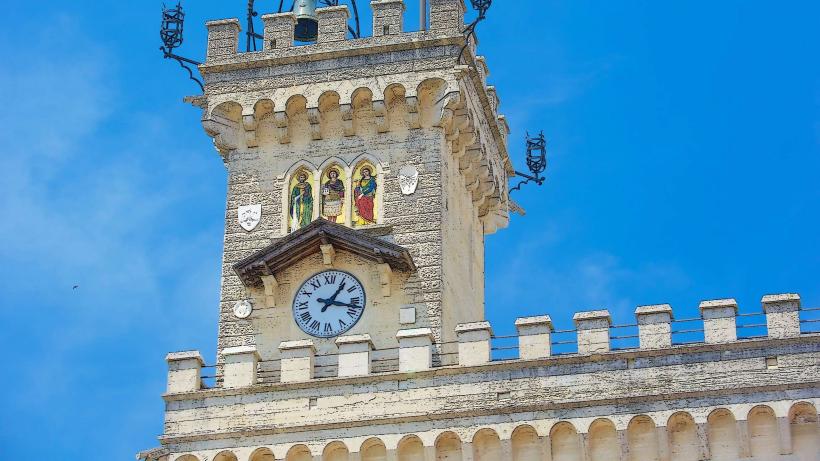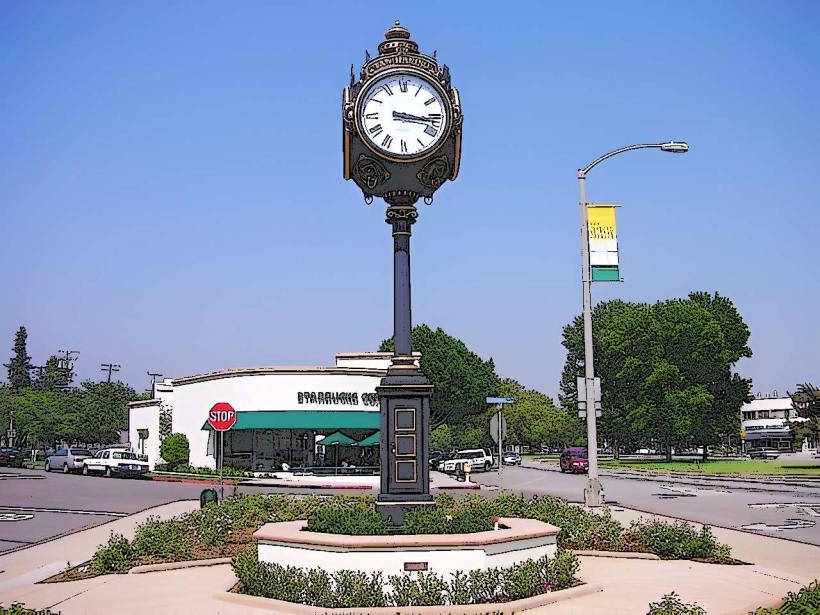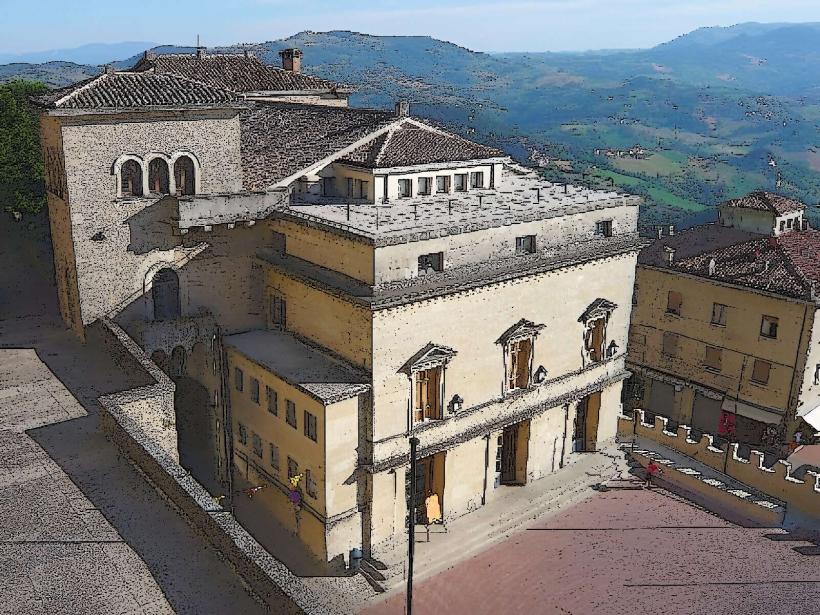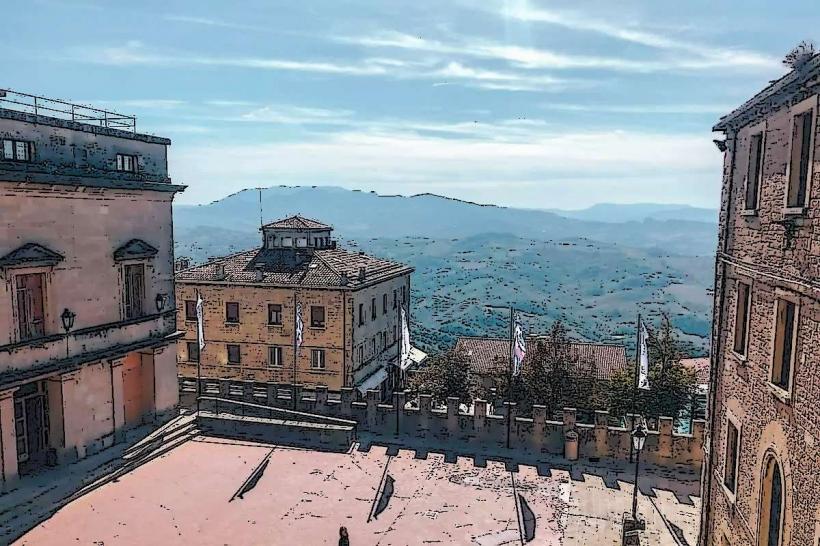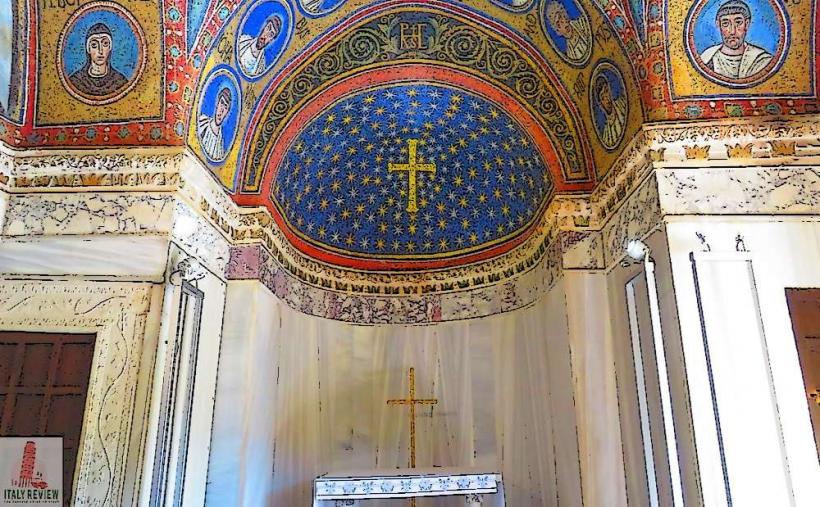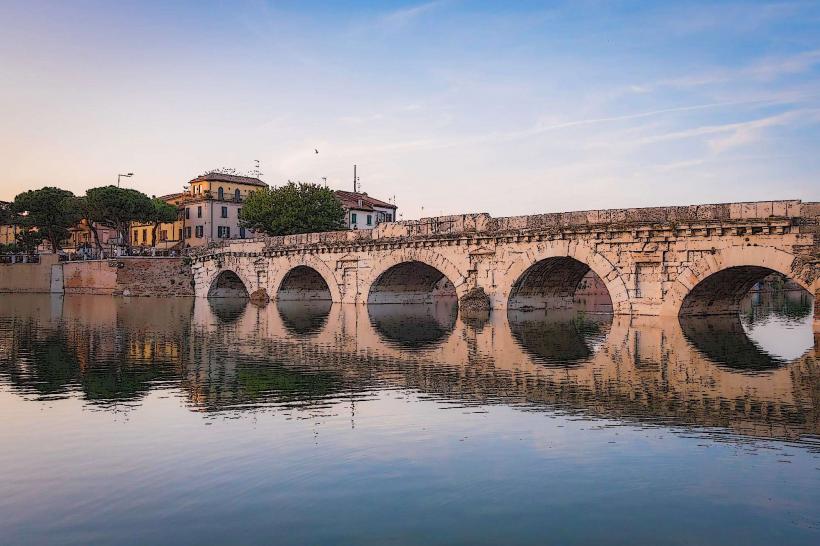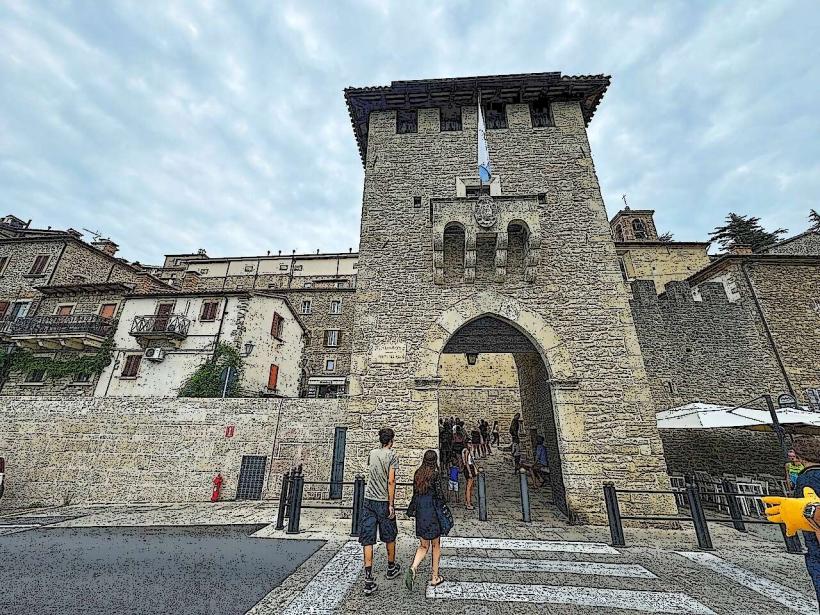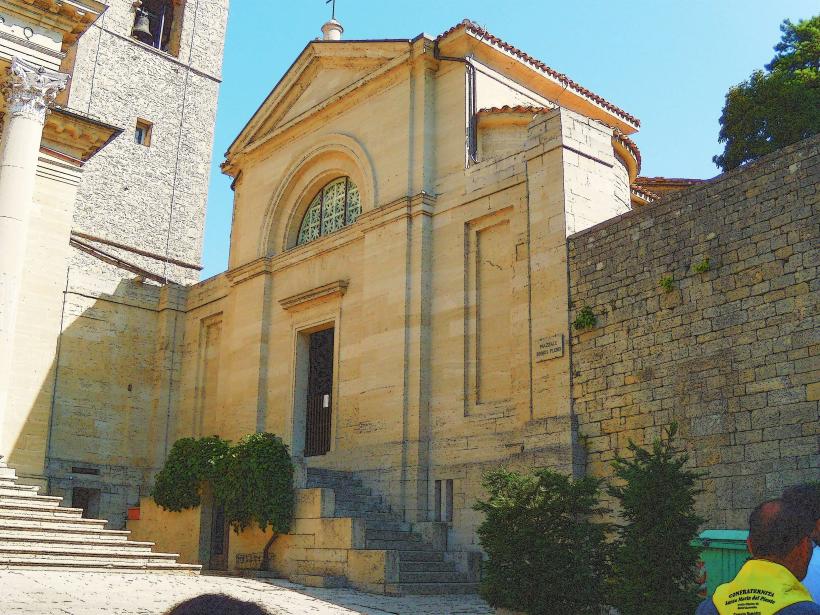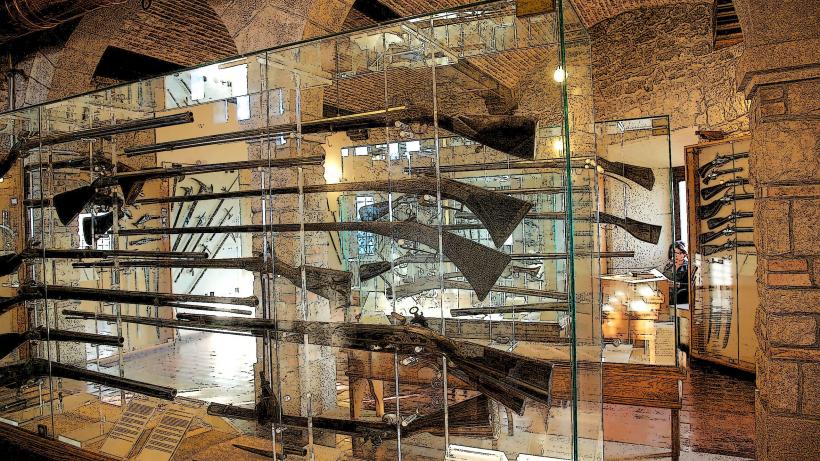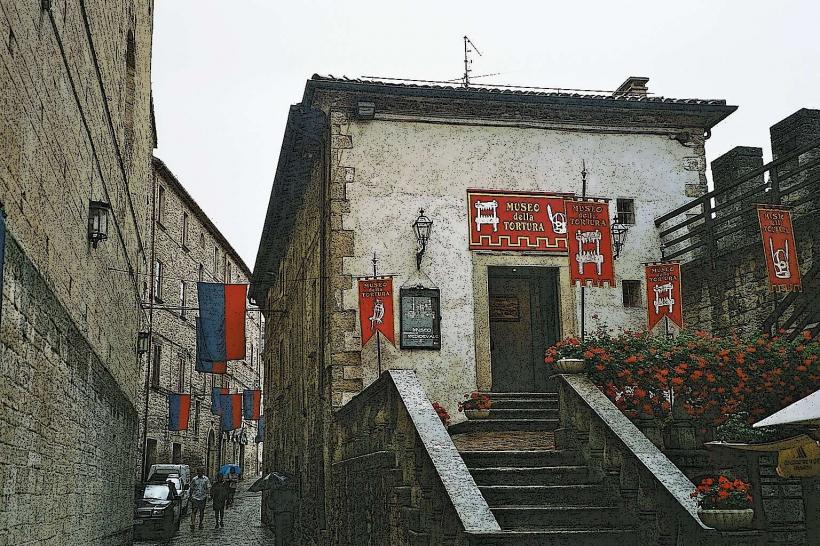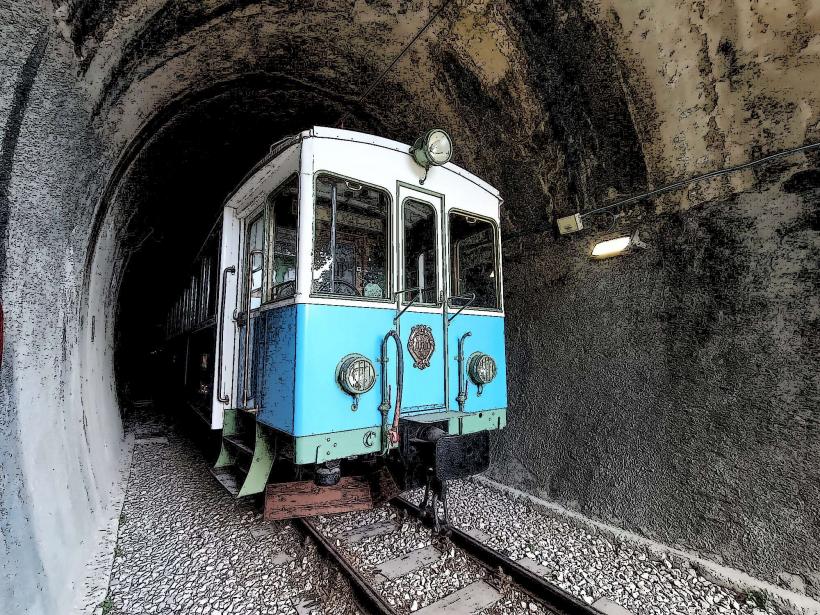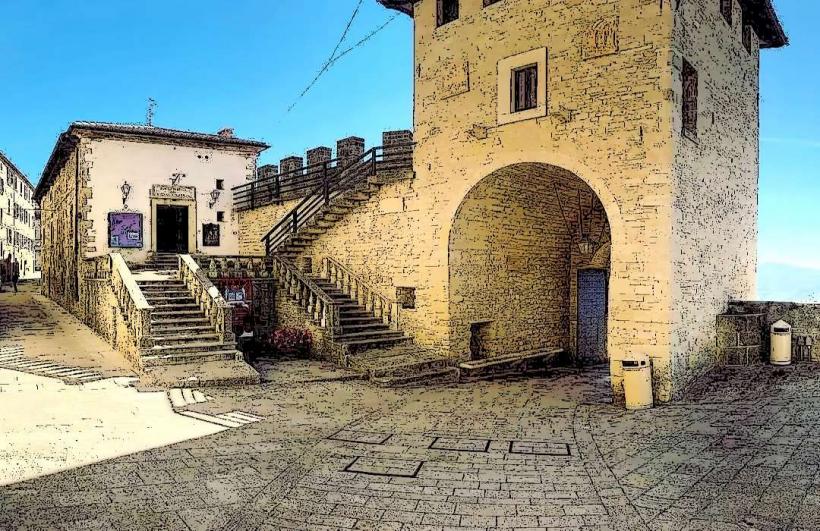Information
Landmark: City Walls of San MarinoCity: City of San Marino
Country: San Marino
Continent: Europe
The City Walls of San Marino (Mura di San Marino) are an important historical feature of the Centro Storico (Historic Center) of the Republic, showcasing the city’s medieval heritage and its long-standing efforts to protect its sovereignty. These walls and fortifications date back to the Middle Ages and are integral to the country’s identity and defense system. They also contribute to San Marino's status as a UNESCO World Heritage site.
Key Features:
Historical Significance:
- The City Walls of San Marino were built over several centuries, beginning in the 11th century. They were part of a series of defensive measures designed to protect the Republic from external threats. The walls were constructed at a time when the Republic was vulnerable to attack from neighboring powers and hostile forces.
- These fortifications were essential for the preservation of the Republic's independence, which has been maintained for over 1,700 years. The walls played a key role in ensuring that San Marino remained a sovereign and self-governing entity, despite being surrounded by larger and more powerful states.
Architecture and Structure:
- The City Walls are made from the local stone of Mount Titano, blending naturally with the surrounding landscape. The walls are characterized by high, sturdy stone walls punctuated with watchtowers and gates. These fortifications were designed to protect the city center and provide a vantage point for spotting approaching enemies.
- The walls are primarily defensive in nature, with narrow, winding paths that lead to key gates and entry points into the historic center. Some sections of the walls feature battlements, offering protection to sentries, and the walls themselves are often reinforced with towers to allow for better surveillance and defense.
- The Gates of San Marino are also notable components of the wall system, such as the Porta San Francesco, Porta del Paese, and Porta Montale. These gates marked the main entrances to the city and are still visible today.
Watchtowers:
- The City Walls are punctuated by several watchtowers, which were used by guards to monitor the surrounding area for any potential threats. These towers provided an elevated position for soldiers, allowing them to detect approaching invaders from a distance.
- The most famous of these towers is the Torre Guaita, one of the three medieval towers that form part of San Marino’s defensive system. It stands at one of the highest points of the city and provides panoramic views of the surrounding region.
- Other notable towers include the Torre Cesta and the Torre Montale, which were also integral to the city’s defensive strategy.
Defensive Role:
- The City Walls of San Marino were part of a broader military strategy designed to protect the Republic from invasion. Throughout history, these walls have helped defend the city from various threats, including those posed by powerful neighbors like Papal States, Italy, and other neighboring regions.
- San Marino’s geographical location on Mount Titano provided a natural defensive advantage, with its steep terrain and fortified walls making it difficult for enemies to approach the city. The walls were not only a physical barrier but also a psychological symbol of the Republic's resilience and determination to preserve its freedom.
- Over time, as warfare techniques evolved, the walls were less used for active defense but remained a critical part of the city’s cultural identity and historical memory.
Tourism and Preservation:
- Today, the City Walls are a significant tourist attraction, drawing visitors who are interested in exploring the medieval history of San Marino. The walls and towers are accessible to tourists, and visitors can walk along parts of the ancient fortifications, which offer a unique perspective of the historic center and surrounding countryside.
- Several sections of the walls and gates have been preserved and are protected as part of San Marino’s UNESCO World Heritage designation. Efforts have been made to maintain the integrity of the medieval fortifications, ensuring that they continue to stand as a testament to the Republic’s long-standing history of independence and self-defense.
Cultural Importance:
- The City Walls of San Marino are not only an important military structure but also a cultural symbol of the Republic. They represent the autonomy of San Marino and its ability to preserve its independence through both peaceful means and military defense. The walls serve as a reminder of the Republic’s commitment to self-governance and its role as one of the world’s oldest republics.
- The walls and towers are often featured in cultural events and national celebrations, with their historical significance playing a prominent role in the Republic’s identity. The City Walls help visitors understand the history of the Republic's sovereignty, making them a key part of the national heritage.
Modern-Day Use:
- While the City Walls no longer serve a defensive military purpose, they continue to be an important part of the Republic’s urban landscape. The walls and towers serve as a scenic backdrop for the city and offer panoramic views of the surrounding area.
- The walls are also a popular walking route for visitors, providing an opportunity to explore San Marino’s medieval cityscape while enjoying views of the Italian countryside and the city below. The experience of walking along the walls offers a deeper understanding of the Republic’s historical context and natural beauty.
Conclusion:
The City Walls of San Marino are an integral part of the Republic’s historical and cultural heritage. As a UNESCO World Heritage site, the walls stand as a testament to the Republic’s independence, resilience, and historical continuity. These fortifications, with their watchtowers and gates, continue to attract visitors who seek to experience San Marino’s medieval history firsthand. Whether walking along the walls or admiring the view from one of the towers, visitors are reminded of San Marino’s remarkable ability to maintain its sovereignty and independence through the centuries.

